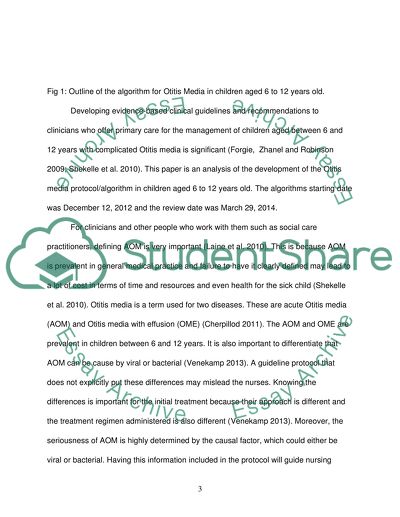Cite this document
(“An Analysis of the development of Otitis Media Protocol/Algorithm in Essay”, n.d.)
An Analysis of the development of Otitis Media Protocol/Algorithm in Essay. Retrieved from https://studentshare.org/nursing/1647229-an-analysis-of-the-development-of-otitis-media-protocolalgorithm-in-children-aged-6-to-12-years-old
An Analysis of the development of Otitis Media Protocol/Algorithm in Essay. Retrieved from https://studentshare.org/nursing/1647229-an-analysis-of-the-development-of-otitis-media-protocolalgorithm-in-children-aged-6-to-12-years-old
(An Analysis of the Development of Otitis Media Protocol/Algorithm in Essay)
An Analysis of the Development of Otitis Media Protocol/Algorithm in Essay. https://studentshare.org/nursing/1647229-an-analysis-of-the-development-of-otitis-media-protocolalgorithm-in-children-aged-6-to-12-years-old.
An Analysis of the Development of Otitis Media Protocol/Algorithm in Essay. https://studentshare.org/nursing/1647229-an-analysis-of-the-development-of-otitis-media-protocolalgorithm-in-children-aged-6-to-12-years-old.
“An Analysis of the Development of Otitis Media Protocol/Algorithm in Essay”, n.d. https://studentshare.org/nursing/1647229-an-analysis-of-the-development-of-otitis-media-protocolalgorithm-in-children-aged-6-to-12-years-old.


